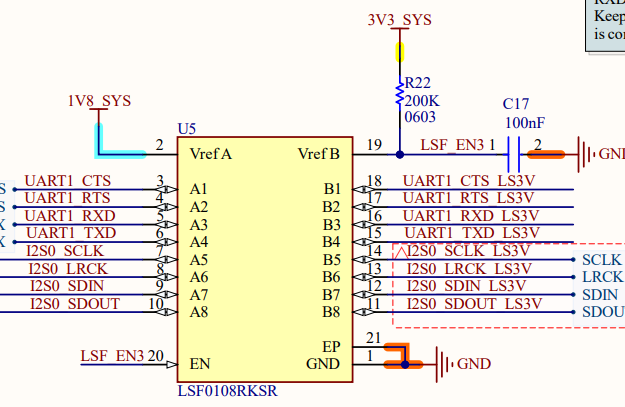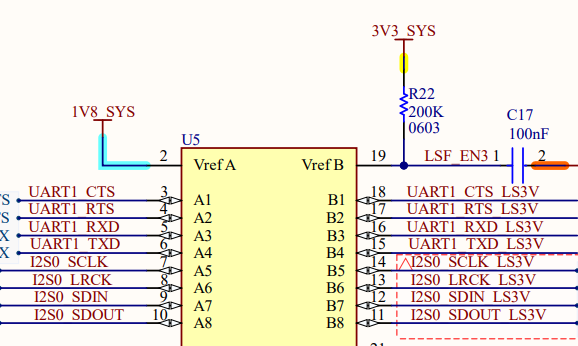Other Parts Discussed in Thread: TXU0204, TXU0304, TXB0108
Hi all,
I've already designed the board using LS0108 for UART, SPI, I2S. The method is to translate the voltage between 1V8 <-> 3V3.
According to this [question about LSF0204] which I just asked, It seems that I just misunderstand the mechanism of LSF family voltage translator.
Is it necessary to modify this circuit using pullup R or any modifying can be applied?




